From the sprawling savannas of Africa to the lush rainforests of South America, the world is teeming with incredible wildlife destinations. Discover where to witness nature’s most awe-inspiring creatures in their natural habitats and create unforgettable memories.
The thrill of seeing a lion prowl the African plains, a jaguar stealthily moving through the Amazon, or a polar bear traversing the Arctic ice, is an experience that stays with you forever. For animal lovers, travelling to witness wildlife in its natural habitat is more than just a vacation; it’s a journey into the heart of the planet’s most diverse ecosystems. Here’s a guide to the top wildlife destinations around the globe, each offering unique opportunities to connect with nature.
Yellowstone National Park, USA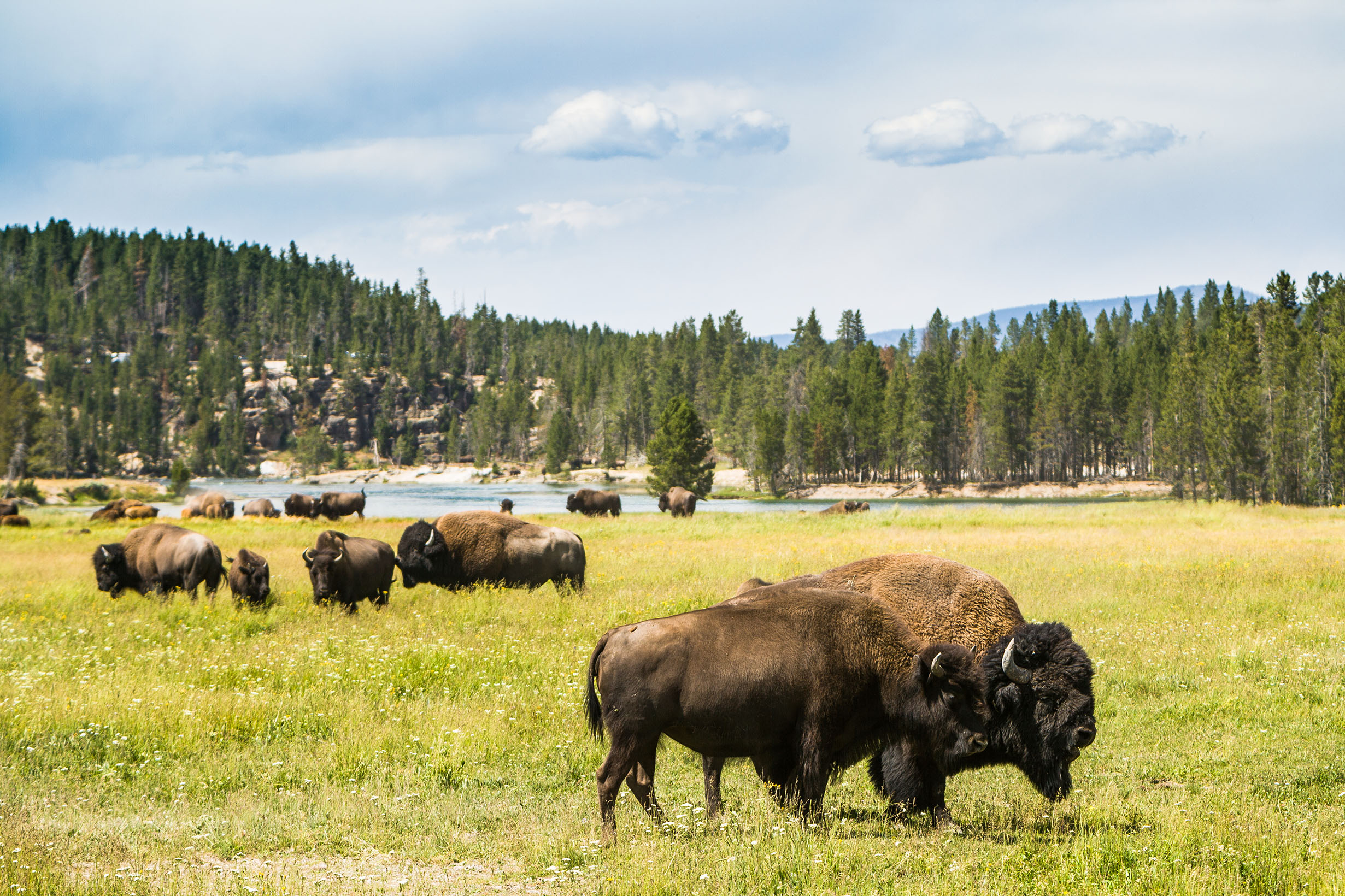
Yellowstone National Park is a paradise for wildlife enthusiasts, boasting the largest concentration of mammals in the lower 48 states. The park is home to 67 different mammal species, including iconic large predators like grizzly bears, black bears, wolves, mountain lions, and wolverines, as well as eight species of hoofed mammals such as bison, elk, moose, and pronghorn. Yellowstone’s bison herds are particularly noteworthy, they represent the only continuously free-ranging bison population in the United States since prehistoric times.
Bird lovers will be equally captivated: nearly 300 bird species have been documented in Yellowstone, with about 150 nesting in the park each year. The diversity includes raptors, songbirds, shorebirds, and waterfowl. Among the most impressive are trumpeter swans, the largest wild waterfowl in North America, and the park’s populations of bald eagles, ospreys, and peregrine falcons, all of which have made remarkable recoveries in recent decades.
Yellowstone is also a geothermal wonderland, featuring more than 500 active geysers, over half of all the geysers on Earth, alongside countless hot springs, mudpots, and fumaroles. This unique combination of rich wildlife and geothermal activity makes Yellowstone a truly unparalleled destination for nature lovers. For the best wildlife viewing, visit in late spring or early summer, when animals are most active and migratory birds return to nest.
Trail Details:
- Special viewpoint: Lamar Valley is renowned as the “Serengeti of North America,” offering some of the best opportunities to spot bison, wolves, bears, and herds of elk in their natural habitat.
- Nearby F&B: After a day of wildlife watching, stop by the historic Roosevelt Lodge Dining Room for hearty Western fare and a rustic atmosphere, or the Mammoth Hot Springs Dining Room for classic American dishes with a view of the terraces.
Rincón de la Vieja National Park, Costa Rica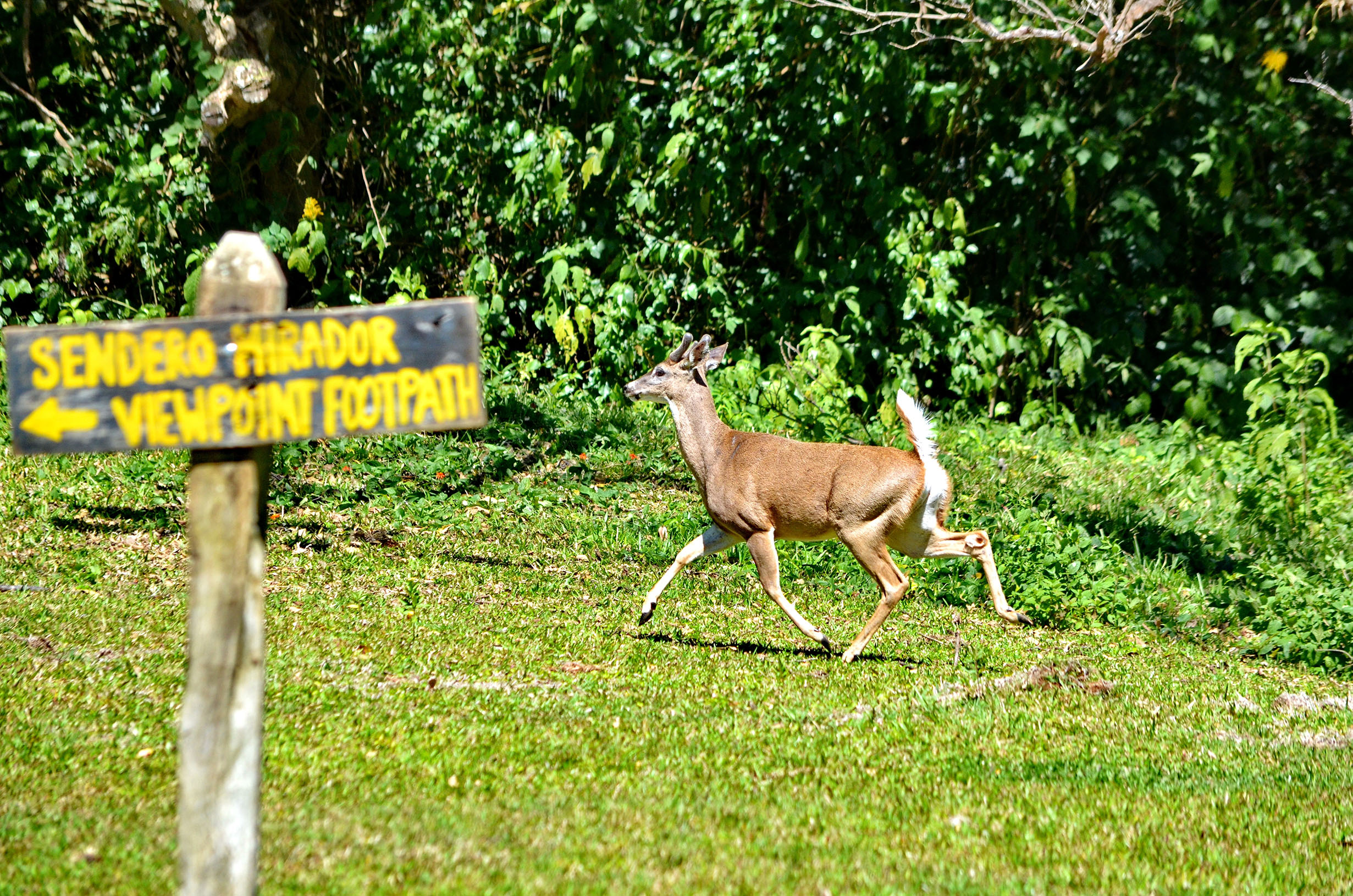
Rincón de la Vieja National Park is a place where natural wonders and ancient legends intertwine. Dominated by the largest and most active volcano in Guanacaste, the park’s namesake—Rincón de la Vieja, or “Corner of the Old Woman”—rises to 6,286 feet (1,916 metres) and stretches 15 km wide. The volcano is often called the “Colossus of Guanacaste” and is a 600,000-year-old geological marvel with at least nine volcanic craters and over 32 rivers cascading down its slopes, bridging the Continental Divide.
The park’s evocative name is rooted in indigenous legend. According to the story, Princess Curubandá, daughter of a local chieftain, fell in love with Prince Mixcoac from an enemy tribe. When her father discovered the forbidden romance, he cast Mixcoac into the volcano’s fiery crater. Heartbroken, Curubandá retreated to the volcano’s slopes, where she became a healer, living in solitude and dispensing remedies learned from the land. Locals seeking cures were told to visit “the corner of the old woman,” and thus, the volcano earned its enduring name.
Historically, the volcano’s frequent eruptions and plumes of smoke acted as a natural lighthouse for ships navigating the Pacific coast. The last significant eruption was in 1998, but the area remains alive with geothermal activity—steaming fumaroles, mini-geysers, bubbling mud pots, and natural hot springs dot the landscape, particularly in the Las Pailas area, which means “The Cauldrons” in Spanish.
Today, Rincón de la Vieja National Park is a UNESCO World Heritage Site and a haven for biodiversity. The park protects critical watersheds and is home to more than 300 bird species and a rich array of wildlife, including white-faced, howler, and spider monkeys, armadillos, collared peccaries, pumas, tapirs, white-nosed coatis, and a multitude of reptiles and orchids, including the country’s national flower, the purple guaria.
Trail Details
- Las Pailas Loop trail: 2.5 miles (3.5 km), typically 2–3 hours to complete.
- Best season: December to April (dry season) for the most accessible trails and best wildlife viewing.
Special viewpoint: The Las Pailas area offers a front-row seat to the volcano’s geothermal wonders, while the summit hike (when open) rewards trekkers with panoramic views stretching to the Pacific Ocean.
Nearby F&B: After your hike, relax at Hotel Hacienda Guachipelín, just minutes from the park entrance, where you can enjoy traditional Costa Rican cuisine and fresh juices in a rustic, eco-friendly setting
Galápagos Islands, Ecuador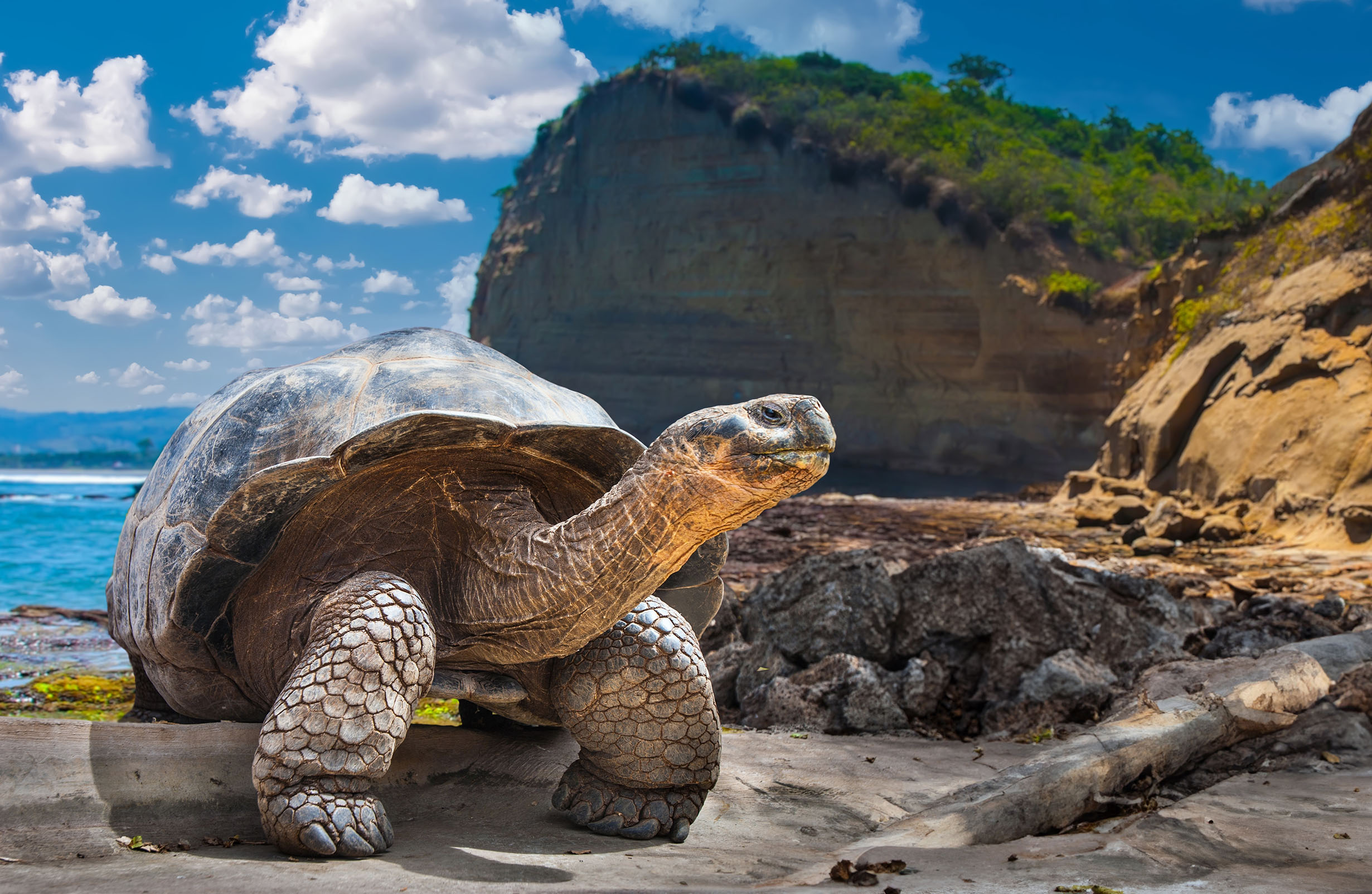
The Galápagos Islands are a living laboratory of evolution and a paradise for wildlife enthusiasts. The archipelago’s very name comes from its most iconic resident—the Galápagos giant tortoise, which inspired Spanish sailors to call these islands “Galápagos,” meaning “saddle,” about the tortoises’ distinctive shell shapes. These gentle giants, some of which can live over 130 years, are just one of the many unique species that have evolved in isolation here. The islands are also home to the world’s only marine iguanas, which forage in the sea, as well as blue-footed boobies, flightless cormorants, Galápagos penguins (the only penguin species found north of the equator), Darwin’s finches, and the apex predator Galápagos hawk. Each of these species has developed remarkable adaptations to the islands’ varied and sometimes harsh environments, making the Galápagos a showcase of natural selection in action.
The Galápagos Islands are one of the world’s most volcanically active regions, a living laboratory where dramatic geological forces and untouched ecosystems combine to create a destination unlike any other. Located atop the Nazca tectonic plate, the archipelago consists of 21 volcanoes, many of which are still active, with over fifty eruptions recorded in just the last 200 years. Recent activity includes ongoing eruptions at Wolf Volcano and La Cumbre, whose slow-moving lava flows have even reached the sea, continually reshaping the islands’ landscapes.
The islands’ protected status is crucial for preserving this extraordinary biodiversity. With 97% of the land or 14 of the 18 main islands designated as Galápagos National Park and a vast surrounding marine reserve, the archipelago provides a haven where ecosystems remain largely untouched and natural processes continue with minimal human interference. This protection ensures that the islands remain one of the world’s last refuges for endemic wildlife, supporting ongoing scientific research and conservation while maintaining the ecological integrity that makes the Galápagos so unique. Many of these creatures display little fear of humans, offering visitors rare opportunities for close observation and photography.
Trail Details:
- Estimated duration: Guided hikes on major islands such as Isabela, Santa Cruz, and Fernandina typically range from 2 to 4 hours, with multi-day cruises offering a chance to explore several islands and volcanic sites.
- Best season: The Galápagos can be visited year-round. June to December (cool, dry season) is ideal for hiking and wildlife spotting, while December to May (warm, wet season) brings lush vegetation and active marine life.
- Special viewpoint: Sierra Negra Volcano (Isabela Island): Hike to the rim of one of the world’s largest volcanic craters for panoramic views of the island’s lava fields and distant peaks. Punta Pitt (San Cristóbal Island): Climb a rocky path to a plateau with sweeping vistas of volcanic landscapes and nesting seabirds.
- Nearby F&B: After a day of exploration, enjoy fresh seafood and locally inspired dishes at Isla Grill in Puerto Ayora (Santa Cruz Island), or relax with a coffee at Galápagos Deli, a favourite among travellers and locals alike.
Amazon Rainforest, Brazil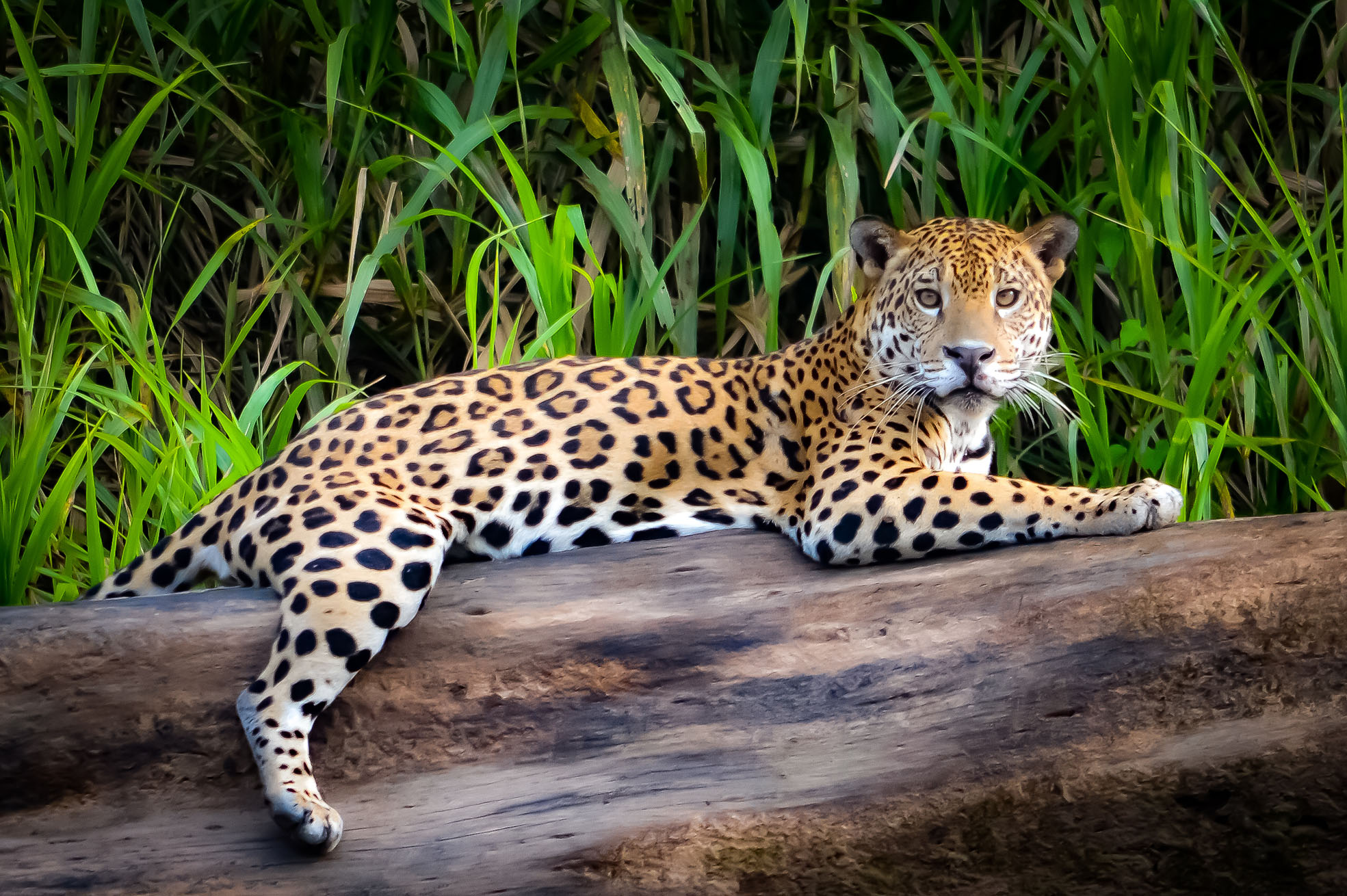
The Amazon Rainforest is not only the largest and most biodiverse tropical forest on Earth, but also a lifeline for South America and the planet at large. Spanning approximately 5.5 million square kilometres, an area larger than the European Union, the Amazon stretches across nine countries, with about 60% of its vast expanse located within Brazil’s borders. This immense biome represents over half of the world’s remaining rainforests and is home to an estimated 390 billion individual trees from around 16,000 species.
The Amazon’s ecological richness is unmatched: it harbours at least 10% of the world’s known biodiversity, including more than 40,000 plant species, over 400 types of mammals, nearly 1,300 species of birds, and millions of insects. It is so diverse that scientists coined the term “biodiversity” inspired by its abundance of life. The forest is also home to more than 24 million people in Brazil alone, including hundreds of thousands of Indigenous Peoples from over 180 different groups, whose cultures and livelihoods are deeply intertwined with the health of the forest.
Beyond its biological treasures, the Amazon is critical in regulating South America’s water cycles and the global climate. The forest releases approximately 20 billion tonnes of water vapour into the atmosphere each day through evapotranspiration, driving rainfall patterns not only across the continent but also influencing weather far beyond its borders. Its rivers account for 15–16% of the world’s total river discharge into the oceans, and the Amazon stores roughly 100 billion metric tonnes of carbon, helping to buffer the planet against climate change.
The Amazon is also vital for local and global communities. It filters and regulates freshwater, supports agriculture both regionally and globally, and is a source of food, medicine, and shelter for Indigenous tribes and traditional communities. Over a third of the forest is formally recognised as Indigenous territory, and these lands have proven to be some of the most effective at preventing deforestation and maintaining ecosystem integrity. Protecting the Amazon means safeguarding not just wildlife, but also the rights, knowledge, and future of the people who have stewarded these lands for generations.
However, this irreplaceable ecosystem faces mounting threats from deforestation, illegal logging, agriculture, and climate change, with more than 20% already lost or degraded in recent decades. Preserving the Amazon is essential, not only for its unparalleled biodiversity and the millions who call it home, but for the health of the entire planet.
Okavango Delta, Botswana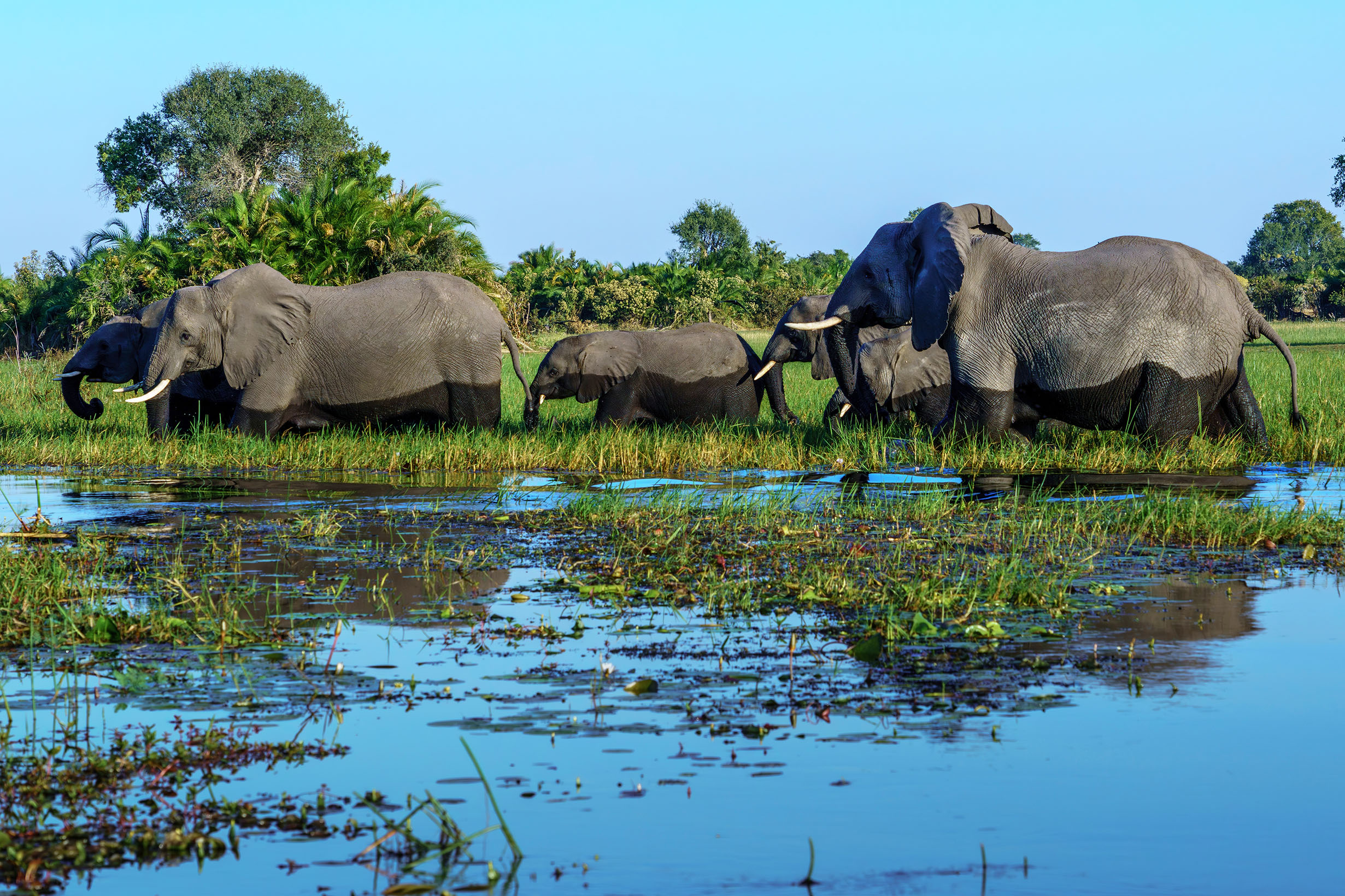
The Okavango Delta in Botswana is a unique and dynamic wetland system. Unlike most major river deltas, the Okavango does not flow into a sea or ocean, making it one of the few inland deltas in the world. Instead, its waters spread across the sands of the Kalahari Desert, creating a vast alluvial fan of permanent marshlands and seasonally flooded plains.
One of the Okavango’s defining features is its annual flooding, which occurs during the region’s dry season. This unusual phenomenon transforms the arid landscape into a lush oasis, attracting wildlife from far and wide. Over millennia, the native plants and animals have synchronised their biological cycles with these seasonal rains and floods. As a result, the delta teems with life during the dry winter months, when water is scarce elsewhere in Southern Africa.
The Okavango Delta is one of the most important wetland habitats in Southern Africa, sustaining high concentrations of wildlife. Among these species are the cheetah, white rhinoceros, black rhinoceros, African wild dog, and lion. Numerous native plants have also adapted to the cycles of flooding within the delta. Papyrus, reeds, and water lilies thrive in the permanent swamps, while specialised grasses and sedges flourish in the seasonally inundated areas. The ecosystem provides a unique habitat for animals and plants to coexist.
Trail Details:
- Estimated duration: Activities range from day trips to multi-day excursions.
- Best season: The dry season (May to October) offers the best wildlife viewing opportunities due to the concentration of animals around water sources.
- Special viewpoint: From a mokoro (traditional dugout canoe) for an intimate experience of the waterways, or from a scenic flight for a panoramic view of the delta’s intricate channels and lagoons.
- Nearby F&B: Many lodges and camps within the delta offer gourmet meals and traditional bush dinners under the stars, providing a taste of Botswana’s hospitality amidst the wilderness.
South Luangwa National Park, Zambia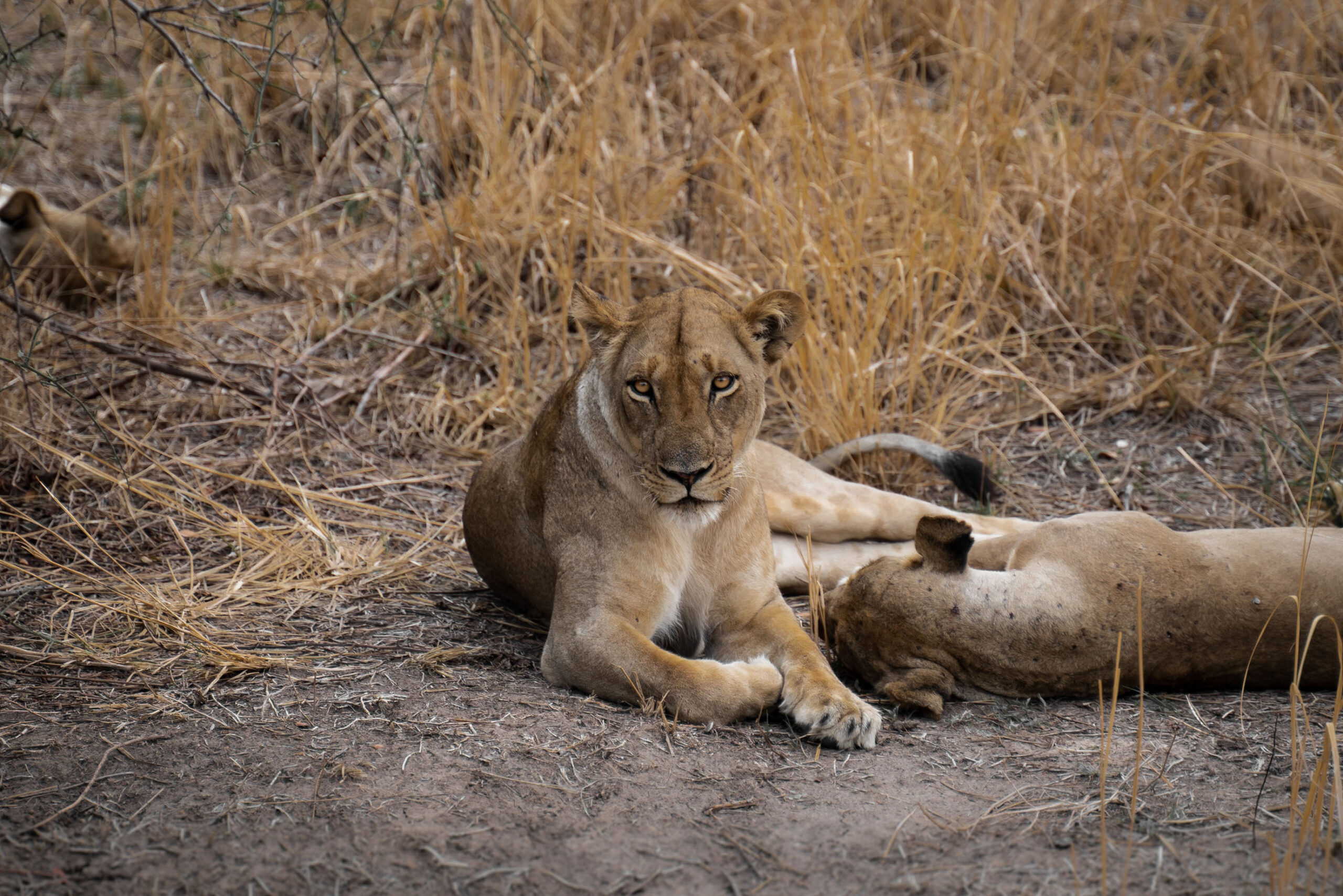
South Luangwa National Park is one of Africa’s premier wildlife destinations, renowned for its exceptional biodiversity and vast, unspoiled wilderness. Covering approximately 9,050 square kilometres, about three times the size of Greater London, the park is a sweeping expanse of savannah, woodlands, and the meandering Luangwa River, which forms its lifeblood. This river and its network of lagoons support a remarkable concentration of wildlife, making South Luangwa a must-visit for safari enthusiasts.
What truly sets South Luangwa apart are its unique and rare animal residents. The park is the only place in the world where you can reliably spot the Thornicroft’s giraffe, Crawshay’s zebra, and Cookson’s wildebeest: three endemic subspecies not found anywhere else on Earth. Alongside these, South Luangwa is famously known as the “Valley of the Leopard,” boasting one of the highest densities of leopards in the world, making sightings almost routine, especially in the Nsefu Sector. The park is also home to large herds of elephants and Cape buffalo, as well as lions, wild dogs, spotted hyenas, and an impressive array of antelope species.
Bird lovers will be captivated by the park’s avian diversity, with over 400 species recorded, including the spectacular southern carmine bee-eater, which nests in colonies along the riverbanks each year. The Luangwa River is a haven for hippos and Nile crocodiles, both of which are easily observed from the riverbanks or on boat safaris.
Trail Details:
- Estimated duration: Game drives and walking safaris typically last 3–4 hours, with options for morning, afternoon, or night excursions.
- Best season: The dry season from May to October is ideal for wildlife viewing, as animals congregate around the dwindling water sources.
- Special viewpoint: Visit the oxbow lagoons along the Luangwa River for dramatic wildlife gatherings, or join a guided walking safari—the park is the birthplace of the walking safari tradition.
- Nearby F&B: After your safari, relax at one of the park’s riverside lodges, such as Mfuwe Lodge, where you can enjoy local Zambian cuisine and watch elephants wander through the lobby during mango season.
Madagascar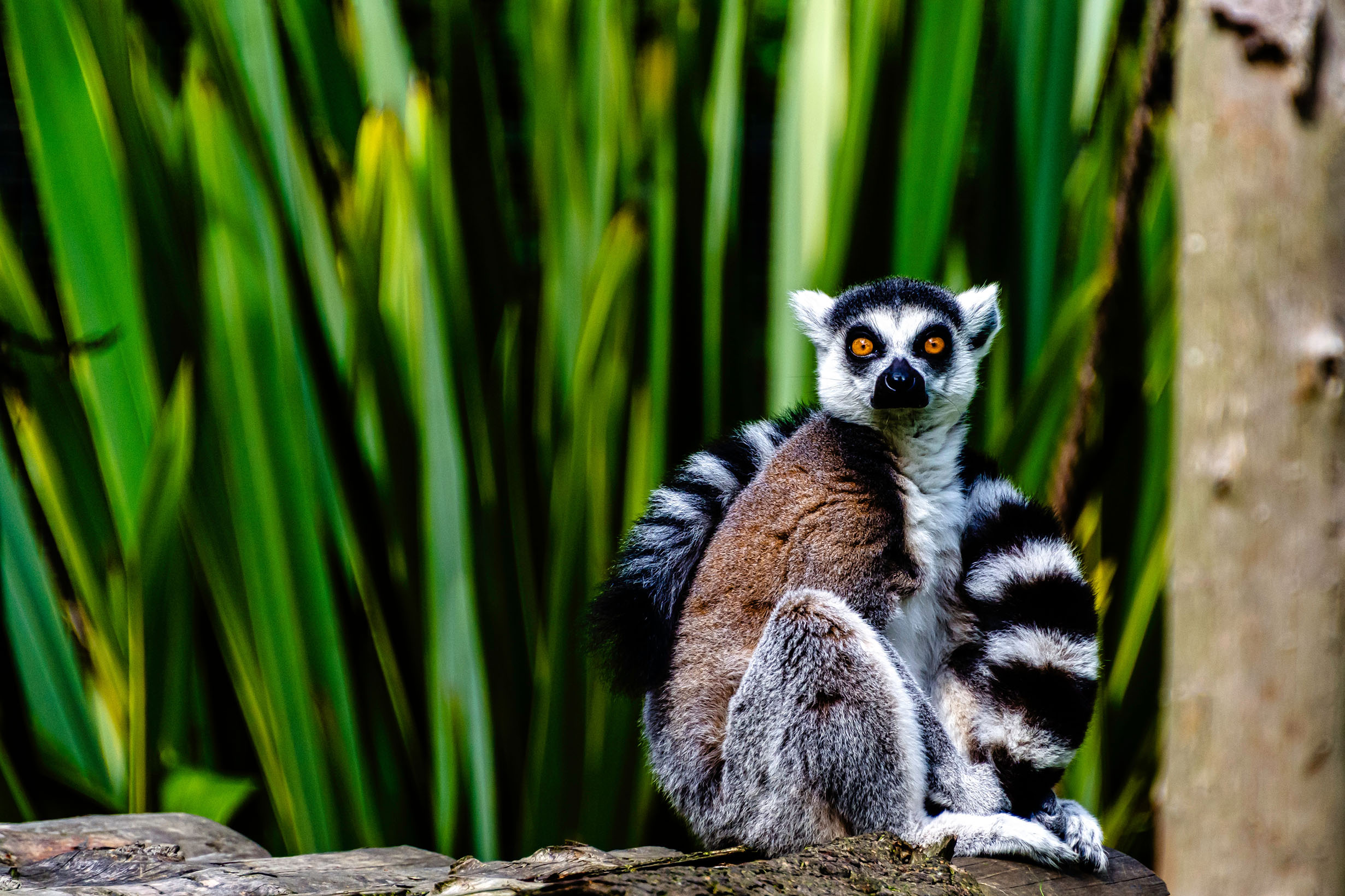
Madagascar, the world’s fourth-largest island, has evolved into a sanctuary of unique flora and fauna, shaped by millions of years of isolation. Separated from Africa approximately 160 million years ago, this island nation off the east coast of Africa has developed its distinct ecosystems and extraordinary wildlife. Approximately 95% of Madagascar’s reptiles, 89% of its plant life, and 92% of its mammals exist nowhere else on Earth, making it a critical biodiversity hotspot.
The statistics of endemism in Madagascar are staggering. Approximately 95% of its reptiles, 92% of its mammals, and 89% of its plant life are endemic, meaning they exist only here and nowhere else in the world. The island is home to around 12,000 species of vascular plants (with over 96% endemic), nearly 400 species of reptiles (about 90% endemic), and all of the world’s 104 species and subspecies of lemurs. Its amphibians are even more exclusive, with 100% endemism, and the island’s forests shelter a dazzling array of orchids, palms, and baobabs. Madagascar’s diverse landscapes, from lush rainforests and spiny forests to dramatic limestone formations and coral reefs, harbour this extraordinary natural wealth.
This evolutionary isolation has led to the emergence of iconic species such as the lemur, found only in Madagascar, and the fossa, the island’s top predator. From the ghostly aye-aye to the playful ring-tailed lemur, these primates represent a unique branch in the evolutionary tree. The island is also home to a dazzling array of reptiles, including colourful chameleons and bizarre leaf-tailed geckos, and a variety of birds, such as the elusive ground roller and the flamboyant vanga. The island’s unique flora includes the Avenue of the Baobabs, where ancient, towering trees line the horizon, and an incredible variety of orchids and palms. The phenomenon of “micro-endemism”, where many species are restricted to small geographic areas, adds further to the island’s ecological intrigue.
Madagascar’s ecosystems are not only a wonder for scientists and nature lovers but are also critical for global conservation. The island accounts for roughly 5% of the world’s biodiversity on just 0.4% of the world’s landmass. However, this extraordinary natural heritage faces growing threats. Deforestation, habitat loss, and illegal wildlife trade are endangering many of Madagascar’s unique species. Protecting Madagascar’s biodiversity requires collaborative efforts from governments, scientists, local communities, and conservation organisations.
Svalbard, Norway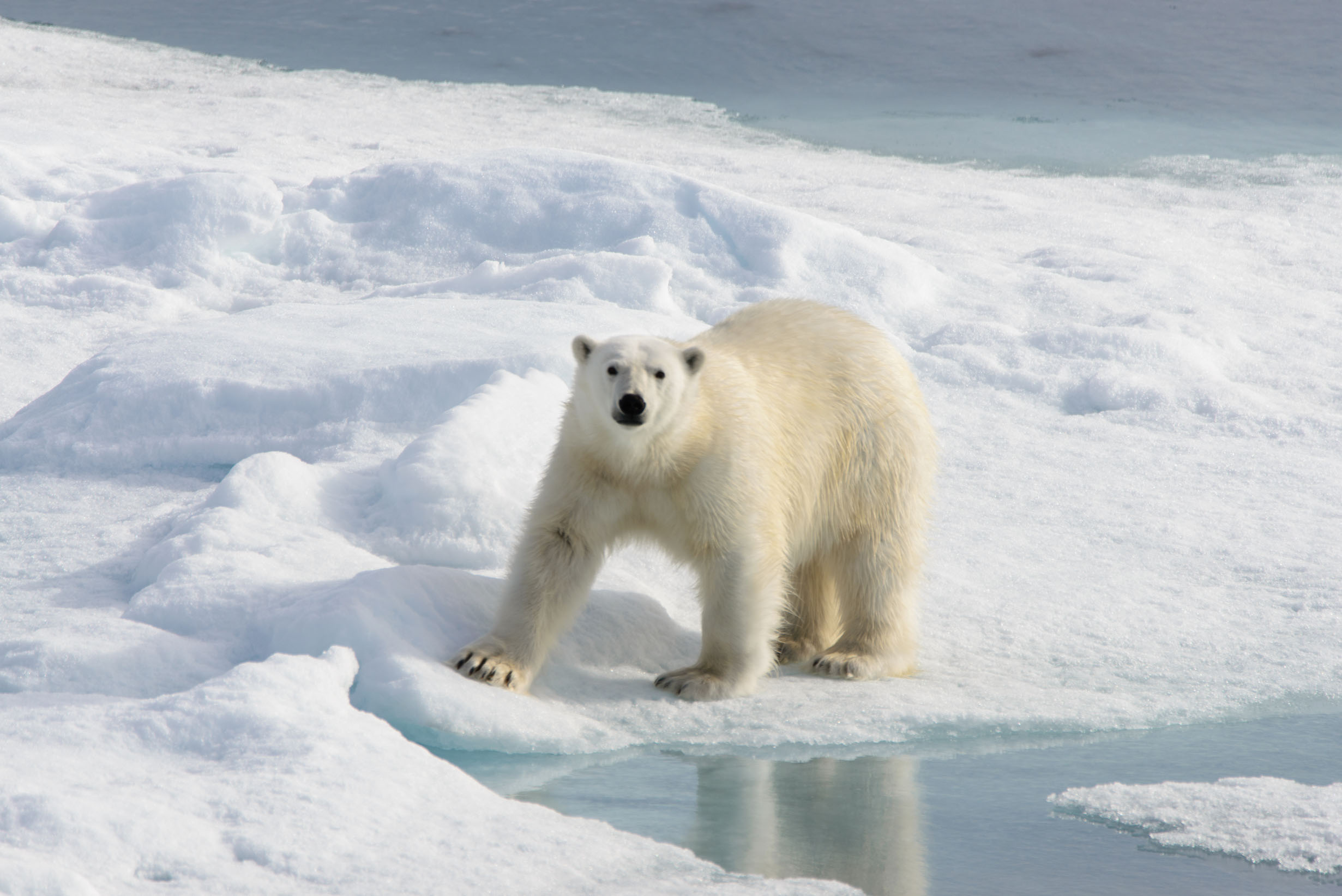
Svalbard, meaning “the land with the cold shores,” is a Norwegian archipelago in the Arctic Ocean, located roughly midway between mainland Norway and the North Pole. This remote and captivating destination offers a raw, unspoilt Arctic wilderness unlike anywhere else on Earth. Majestic mountains, deep-blue sea ice, and a rich array of Arctic wildlife characterise its unique landscape, which is dominated by never-ending glaciers that cover almost 60% of the archipelago’s landmass.
Visiting Svalbard is an immersion into an Arctic realm of nearly never-ending glaciers and stunning, stark beauty. The largest glacier is Austfonna on Nordaustlandet, which covers an area of approximately 8,450 square kilometres, making it one of the largest ice caps in the world.
There are three distinct seasons in Svalbard, each offering a unique Arctic experience:
- Polar Summer (late May to September): Enjoy colourful tundra landscapes, 24-hour daylight, and optimal conditions for hiking, boat trips, and wildlife spotting.
- Northern Lights Winter (October to February): Experience the magical aurora borealis dancing across the night sky, along with activities like dog sledding, snowmobiling, and ice cave exploration.
- Sunny Winter (March to May): Revel in the transition from darkness to daylight, with frozen fjords, vast snowy landscapes, and continued opportunities for winter adventures.
Svalbard is also home to the world’s northernmost urban community, Longyearbyen. Despite its remote location, Longyearbyen offers modern amenities and is a bustling hub for research, tourism, and adventure. From here, visitors can embark on expeditions to explore the surrounding wilderness.
Trail Details:
- Estimated duration: Day hikes and boat tours range from a few hours to full-day excursions, while multi-day expeditions and cruises offer more in-depth exploration of the archipelago.
- Best season: Depending on your interests, Svalbard can be visited year-round. Summer offers optimal hiking and wildlife viewing, while winter is ideal for Northern Lights viewing and snow-based activities.
- Nearby F&B: Longyearbyen boasts several restaurants and cafés serving Arctic-inspired cuisine. Enjoy fresh seafood, reindeer dishes, and traditional Norwegian fare.
Picos de Europa National Park, Spain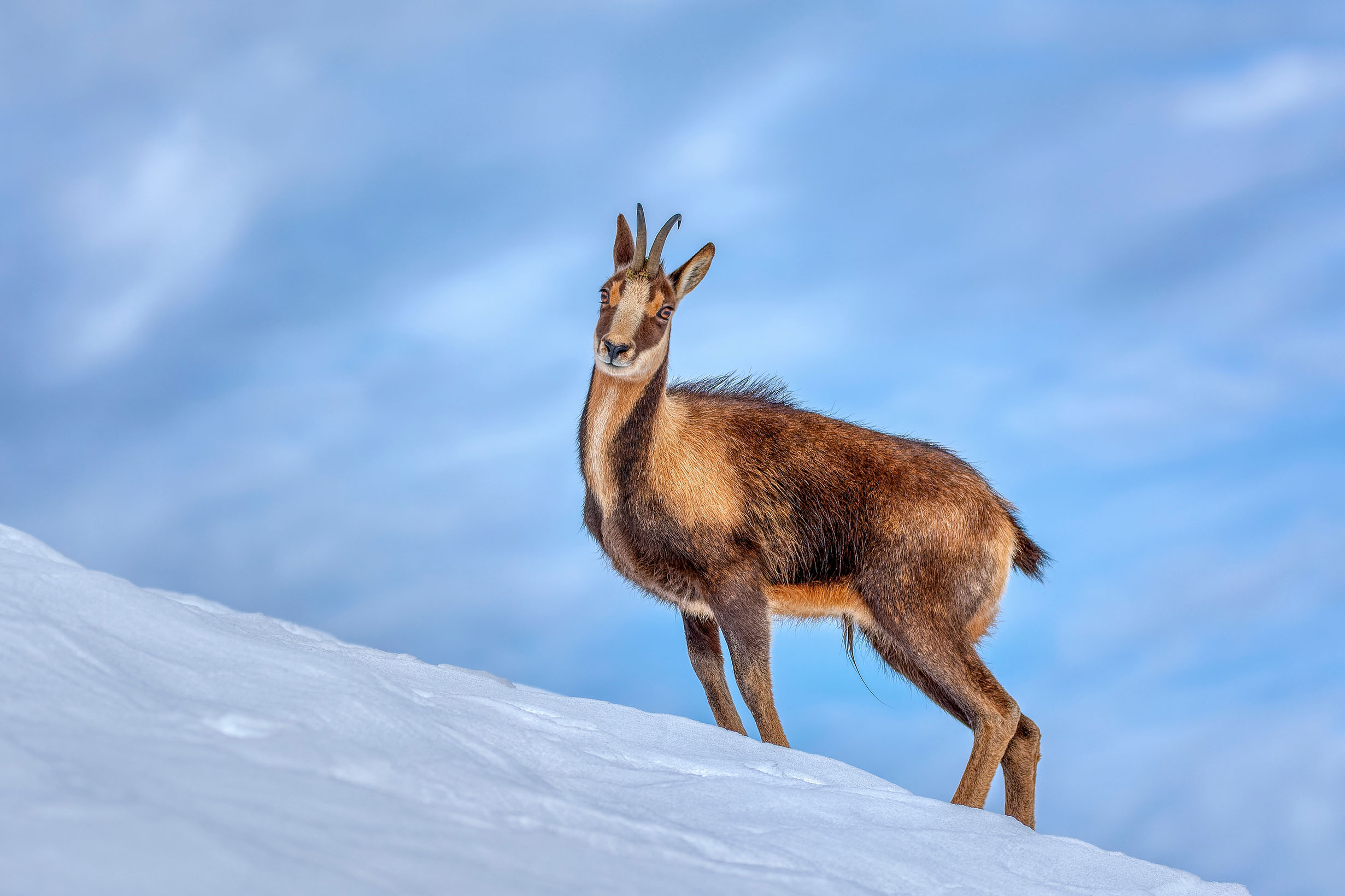
Picos de Europa National Park, nestled in northern Spain, is a dramatic mountain range that spans three provinces: Asturias, Cantabria, and León, and stretches across eleven municipalities. This rugged and picturesque landscape, named the “Peaks of Europe,” rises sharply from the Atlantic coast, creating a stunning backdrop for outdoor adventures. The mountains are primarily composed of limestone formed during the Carboniferous period (approximately 359 to 299 million years ago), a geological history that has shaped their distinctive jagged peaks and deep valleys.
The park offers a wealth of hiking opportunities, catering to all skill levels. From gentle trails through lush meadows to challenging ascents to towering summits, there’s something for everyone to enjoy. The iconic Ruta del Cares (Cares Trail) is a must-do for experienced hikers, carving a path through a breathtaking gorge alongside the Cares River. This thrilling hike offers stunning views and a taste of the park’s dramatic scenery. Other notable hikes include trails around the Covadonga Lakes, which showcase the park’s high-altitude lakes and surrounding peaks.
The Picos de Europa’s wildlife is another major draw, with species like the Cantabrian brown bear, Iberian wolf, chamois, and golden eagle calling the park home. These rugged mountains are also home to unique flora adapted to the high-altitude environment, including rare alpine flowers and ancient beech forests.
Trail Details:
- Estimated duration: Hikes in the Picos de Europa range from short strolls to multi-day treks. The Ruta del Cares is approximately 12 kilometres and takes 3-4 hours to complete.
- Best season: The summer months (June to September) offer the best weather for hiking, but spring and autumn can also be rewarding with fewer crowds and vibrant colours.
- Special viewpoint: Head to the Mirador del Fitu viewpoint for a panoramic view of the coastline and the Picos de Europa.
- Nearby F&B: The region surrounding the park is renowned for its hearty cuisine. Sample local cheeses, stews, and cider at traditional restaurants and taverns in the nearby villages.
Ranthambore National Park, India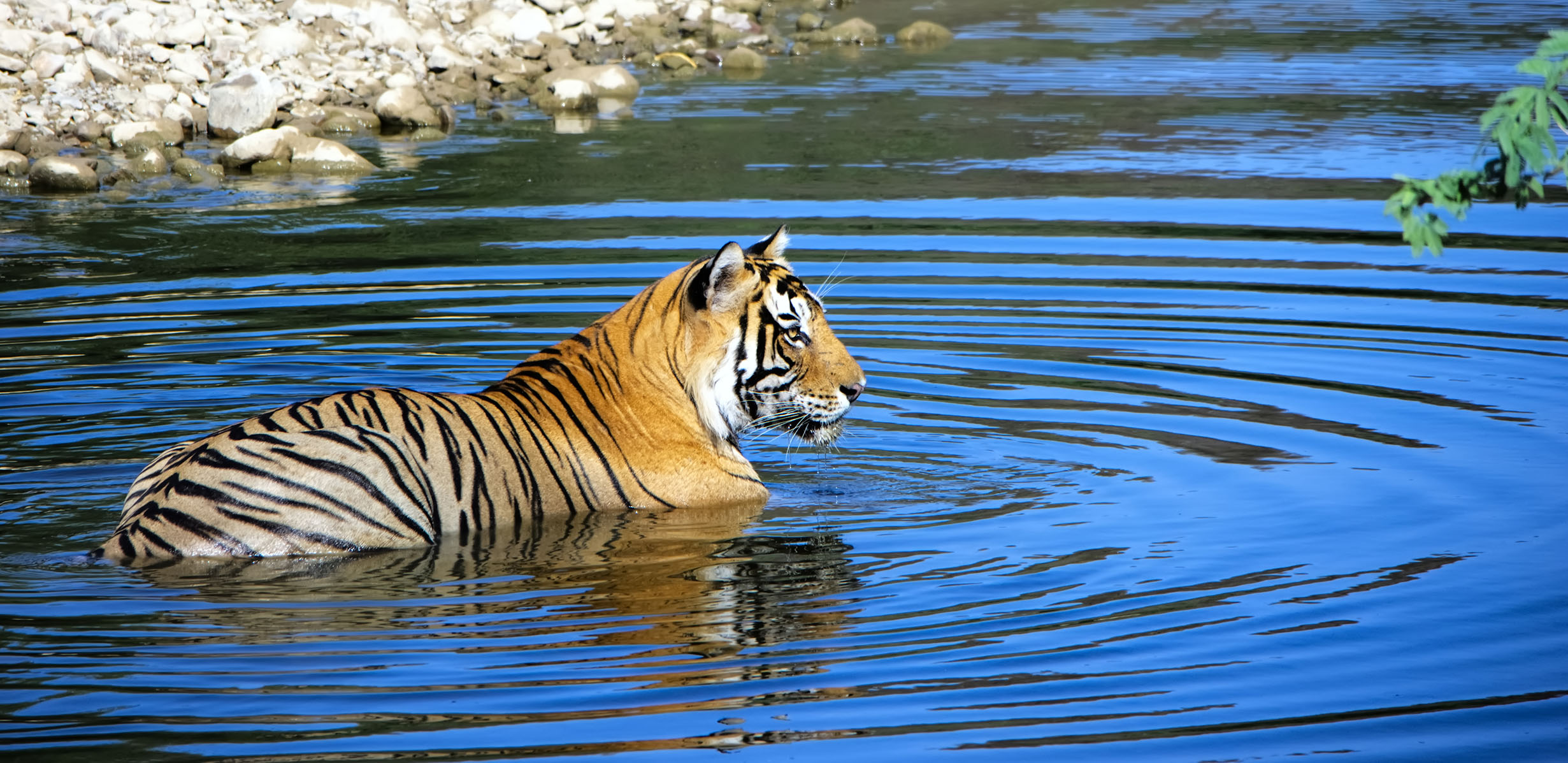
Ranthambore National Park in Rajasthan, India, is renowned for its tiger population and rich biodiversity. Once the private hunting ground of the Maharajas of Jaipur, the park encompasses over 1,334 square kilometres of rugged terrain, including rocky ridges, dry deciduous forests, and vast open meadows. Central to the park’s landscape are the imposing ruins of the 10th-century Ranthambore Fort, a UNESCO World Heritage Site that adds a historic dimension to this natural haven.
Ranthambore has the largest continuous stretch of Anogeissus pendula, or Dhok, forest in India. These unique woodlands define the park’s visual character and play a vital role in the ecosystem, providing crucial habitat and sustenance for a wide array of species. Beyond its tiger population, Ranthambore is home to over 40 species of mammals, including leopards, sloth bears, Indian wild dogs (dholes), sambar deer, chital (spotted deer), and nilgai (blue bulls). It also shelters over 320 species of birds, making it a haven for birdwatchers and ornithologists alike. Keep an eye out for the Indian Eagle-Owl, Great Horned Owl, and Painted Storks!
Beyond its remarkable wildlife, Ranthambore’s landscape is dotted with ancient banyan trees, their sprawling roots and canopies providing shelter and adding to the park’s mystical atmosphere. For a unique perspective, consider exploring the park via a hot air balloon ride. From above, you can appreciate the vastness of the Dhok forests, the meandering rivers, and the imposing Ranthambore Fort, which is now occupied by langurs, offering a unique aerial view of this diverse ecosystem.
Trail Details:
- Estimated Duration: Jeep safaris typically last 3-4 hours, available in the morning and afternoon. Hot air balloon rides provide approximately 1-hour aerial views of the park.
- Best Season: October to June is the ideal time to visit, with cooler temperatures and better wildlife sightings. The park is generally closed during the monsoon season (July to September).
- Special Viewpoint: The fort offers panoramic views of the park, while the Kachida Valley provides excellent chances to spot sloth bears and other mammals.
- Nearby F&B: After your safari, enjoy traditional Rajasthani cuisine at one of the many lodges and resorts near the park, such as the Oberoi Vanyavilas or the Sher Bagh, where you can savour local flavours while sharing stories of your wildlife encounters.
Khao Sok National Park, Thailand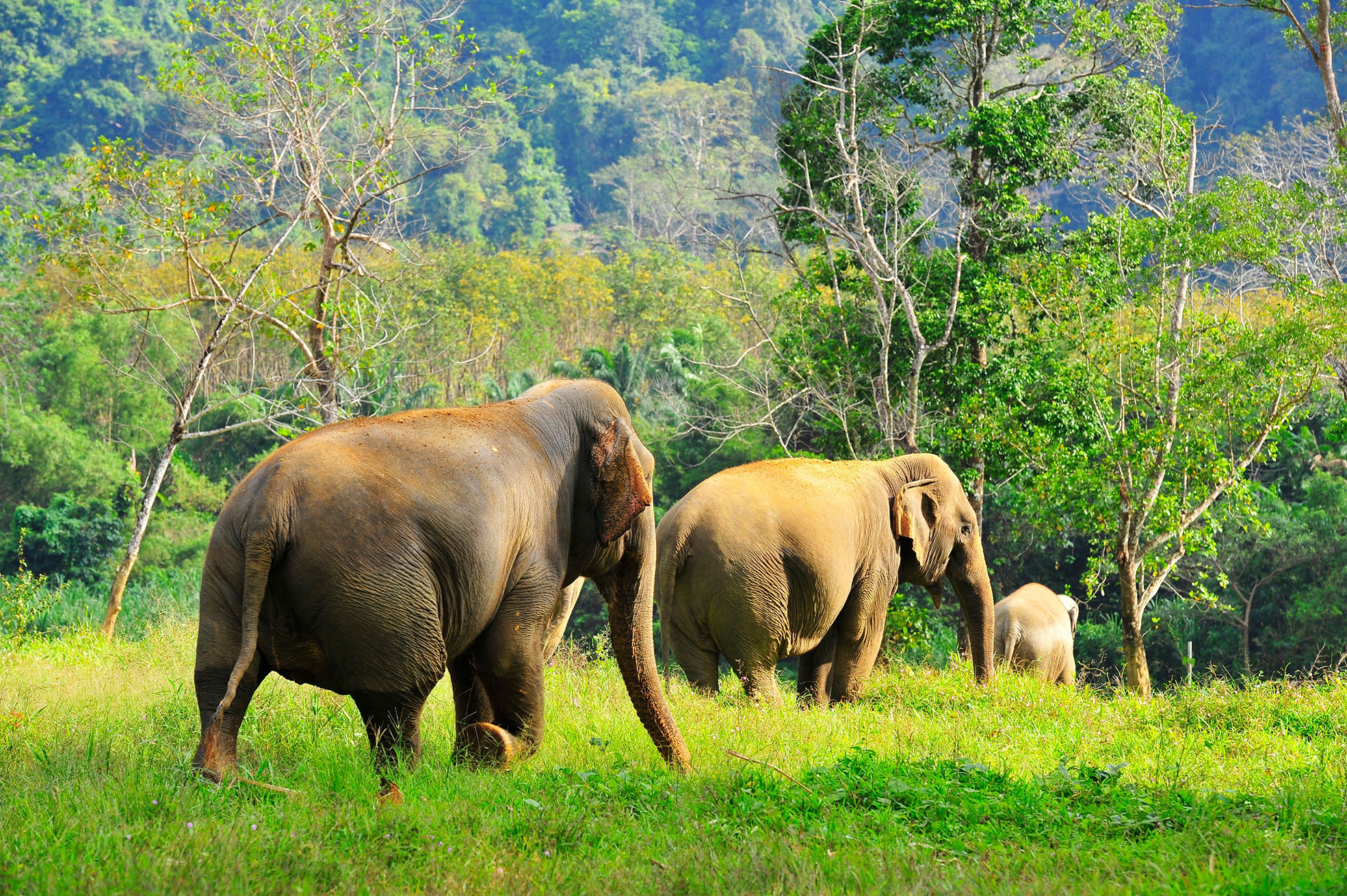
Khao Sok National Park, established in 1980, is a haven of ancient rainforests, dramatic limestone cliffs, and serene waterways in southern Thailand. The park’s ecosystem is incredibly biodiverse, showcasing an estimated 200 plant species per hectare, a testament to its ecological richness and status as one of the world’s oldest rainforests.
Beyond its stunning landscapes, Khao Sok offers a variety of unique experiences. One of the most popular activities is the opportunity to ethically interact with Asian elephants. Several tour operators offer programs where you can observe these magnificent creatures up close, learn about their behaviour and conservation, and even participate in feeding and bathing them. These experiences prioritise the welfare of the elephants, allowing them to roam freely in a chain-free environment.
Visitors can also immerse themselves in Khao Sok’s natural beauty through jungle treks, canoe trips down the Sok River, and boat tours on Cheow Larn Lake, an island-dotted lake with floating bungalows. Birdwatching is another rewarding activity. With 311 bird species recorded in the park, nature enthusiasts can spot hornbills, kingfishers, herons, and many more among the park’s diverse avifauna.
Trail Details:
- Estimated duration: Jungle treks range from a few hours to multi-day excursions. Boat tours on Cheow Larn Lake typically last a full day. Ethical elephant experiences usually take half a day.
- Best season: The dry season from December to April is ideal for hiking and exploring the park’s interior. The wet season from May to November brings lush vegetation and fewer crowds, but may result in limited access to certain areas.
- Special viewpoint: Cheow Larn Lake with its iconic limestone formations rising from the water.
- Nearby F&B: Many local guesthouses and resorts near the park entrance offer traditional Thai cuisine and fresh seafood, using locally sourced ingredients. For a unique dining experience, consider a floating restaurant on Cheow Larn Lake.
Komodo National Park, Indonesia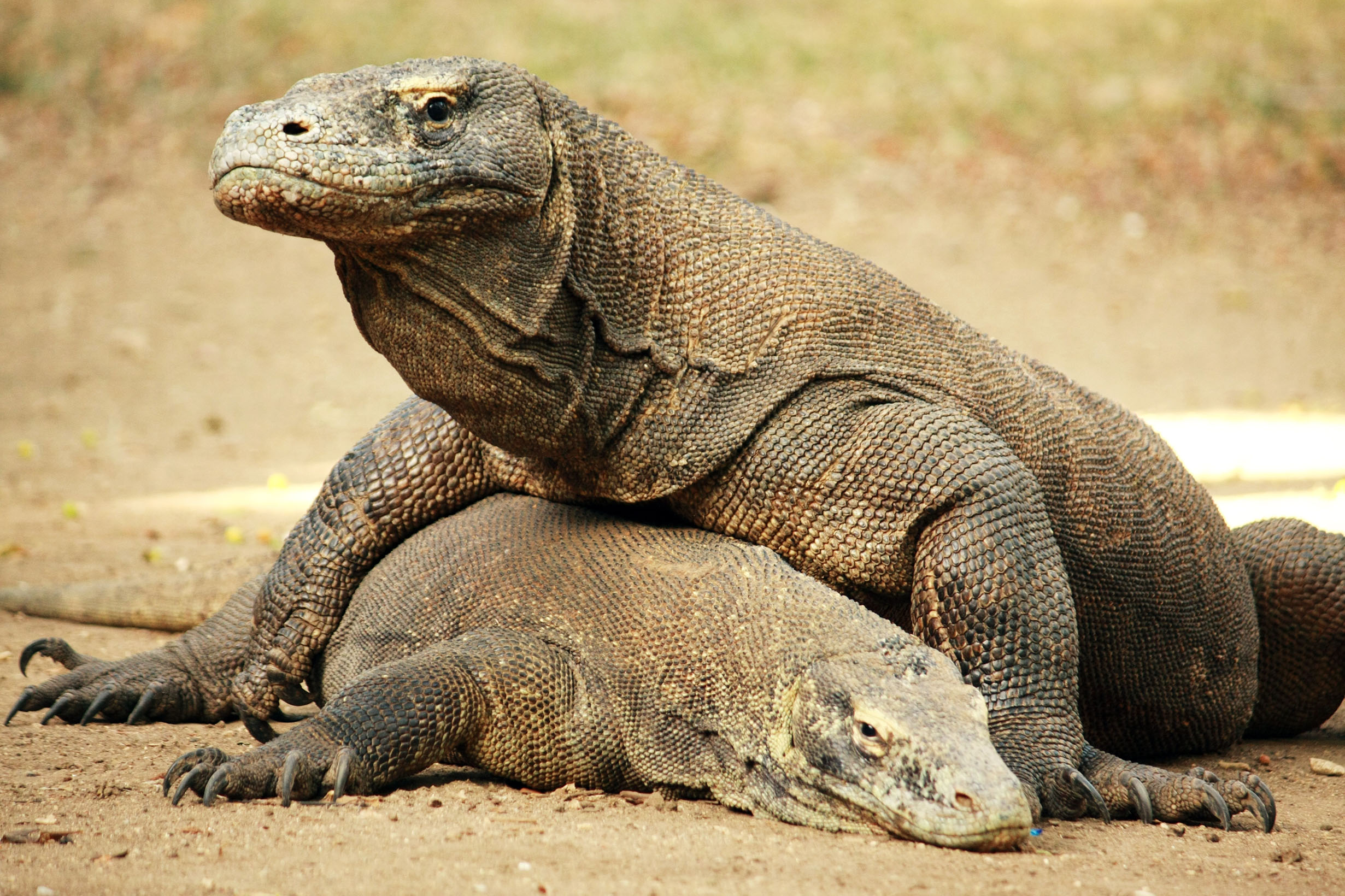
Komodo National Park stands out as one of Indonesia’s driest regions, with a rugged landscape shaped by volcanic origins and a climate defined by long, hot dry seasons and minimal rainfall, receiving only about 800 to 1,000 mm annually. This arid environment, rare in Indonesia’s typically lush archipelago, has fostered unique savannah vegetation and a remarkable blend of flora and fauna, including cloud forests at higher elevations and extensive mangroves in sheltered bays.
The park is world-famous as the last natural refuge of the Komodo dragon, the planet’s largest living lizard. Around 5,700 Komodo dragons roam freely across the islands of Komodo, Rinca, Gili Motang, Gili Dasami, and parts of Flores, making this the only place on Earth where you can observe these prehistoric predators in their native habitat. The dragons share the park with an impressive diversity of wildlife: at least 277 animal species, including 32 mammals, 128 birds, and 37 reptiles, as well as a thriving marine ecosystem teeming with coral reefs, manta rays, and even whales.
One of Komodo National Park’s most enchanting natural wonders is its Pink Beach, locally known as Pantai Merah, located on Komodo Island and also found on Padar Island. The sand’s striking blush hue is created by microscopic foraminifera, marine organisms whose red shells mix with white sand and coral fragments, resulting in a fairytale-like shoreline. Pink Beach is not only visually stunning but also a top spot for snorkeling, with vibrant coral gardens just offshore.
Trail Details:
- Estimated duration: Island treks to see Komodo dragons typically last 1–3 hours, while boat tours that include Pink Beach and snorkelling can take a full day.
- Best season: The dry season from June to September offers the best conditions for hiking, wildlife viewing, and calm seas for boat trips.
- Special viewpoint: Hike to the summit of Padar Island for panoramic views of its three crescent-shaped bays, including the famous pink-hued beach, a photographer’s dream.
- Nearby F&B: After a day of adventure, return to Labuan Bajo on Flores, the gateway town to the park, where you can enjoy fresh seafood and Indonesian cuisine at waterfront restaurants like Atlantis Beach Club or the lively night market.
Great Barrier Reef, Australia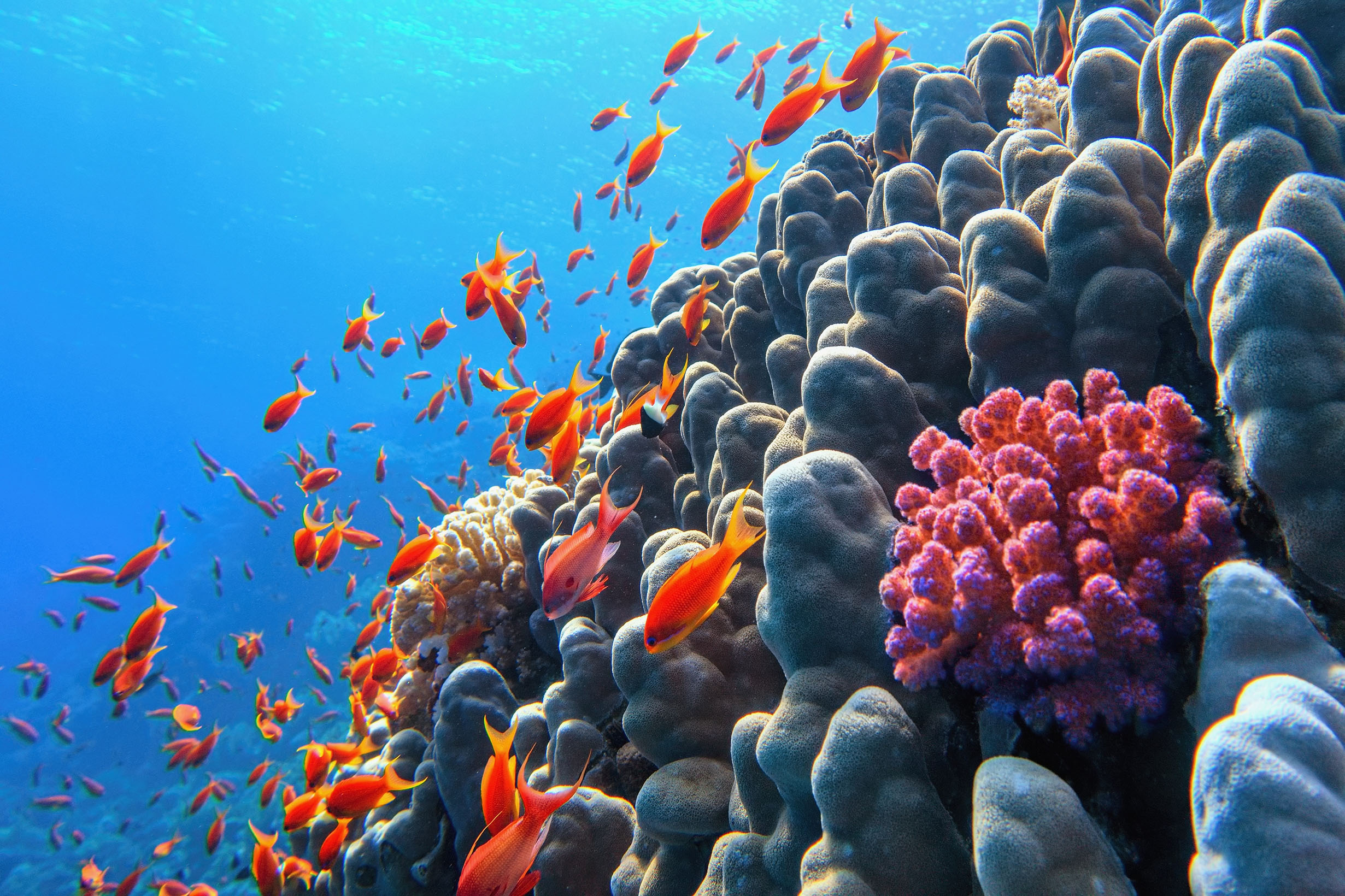
Stretching over 2,300 kilometres and spanning more than 344,000 square kilometres, the Great Barrier Reef is the largest coral reef system on Earth and the only living organism visible from space. Extending across 14 degrees of latitude along Australia’s northeast coast, this UNESCO World Heritage Site is not a single continuous reef, but a vast network of over 2,900 individual reefs and 900 coral islands.
The biodiversity of the Great Barrier Reef is extraordinary. It is home to nearly 9,000 species of marine life, including more than 1,500 species of fish, over 400 species of hard and soft corals, and approximately 4,000 species of molluscs. The reef also supports 30 species of marine mammals such as whales, dolphins, and dugongs, 17 species of sea snakes, and six species of sea turtles, including the green, hawksbill, and loggerhead turtles. Birdwatchers can spot some 240 species of birds that rely on the reef’s islands and cays for nesting and feeding. The reef’s waters are also home to more than 160 types of sharks, including white-tipped and grey reef sharks, as well as hammerhead and whale sharks.
The Great Barrier Reef’s ecological significance is matched by its visual grandeur. Its vibrant coral gardens, clear lagoons, and shifting blue hues are so extensive and distinct that astronauts routinely photograph the reef from the International Space Station. This immense living structure is not only a natural wonder but also a crucial sanctuary for countless vulnerable and endangered species, playing a vital role in global marine biodiversity.
There are numerous ways to explore this underwater marvel. Snorkelling and scuba diving are the most popular, offering up-close encounters with colourful fish, corals, and turtles in their natural habitat. Adventurers can also ride underwater scooters, join glass-bottom boat tours, or descend in mini-submarines for a unique perspective. For a breathtaking overview, scenic flights by helicopter or seaplane reveal the sheer scale and intricate patterns of the reef from above.
- Estimated Duration: Day trips for snorkelling or diving typically last 6–8 hours. Multi-day liveaboard cruises allow for deeper exploration of outer reefs and remote islands.
- Best season: The reef can be visited year-round, but the dry season from June to October offers the best visibility and comfortable weather for marine activities.
- Special viewpoints: Heart Reef (Whitsundays) is best seen by air for its iconic heart shape. Agincourt Reef (off Port Douglas) is renowned for crystal-clear water and abundant marine life.
- Nearby F&B: Cairns and Port Douglas are the main gateways to the reef, offering a wide array of waterfront restaurants and cafés serving fresh seafood and local Australian cuisine.
Spotlight: The Great Migration, Tanzania and Kenya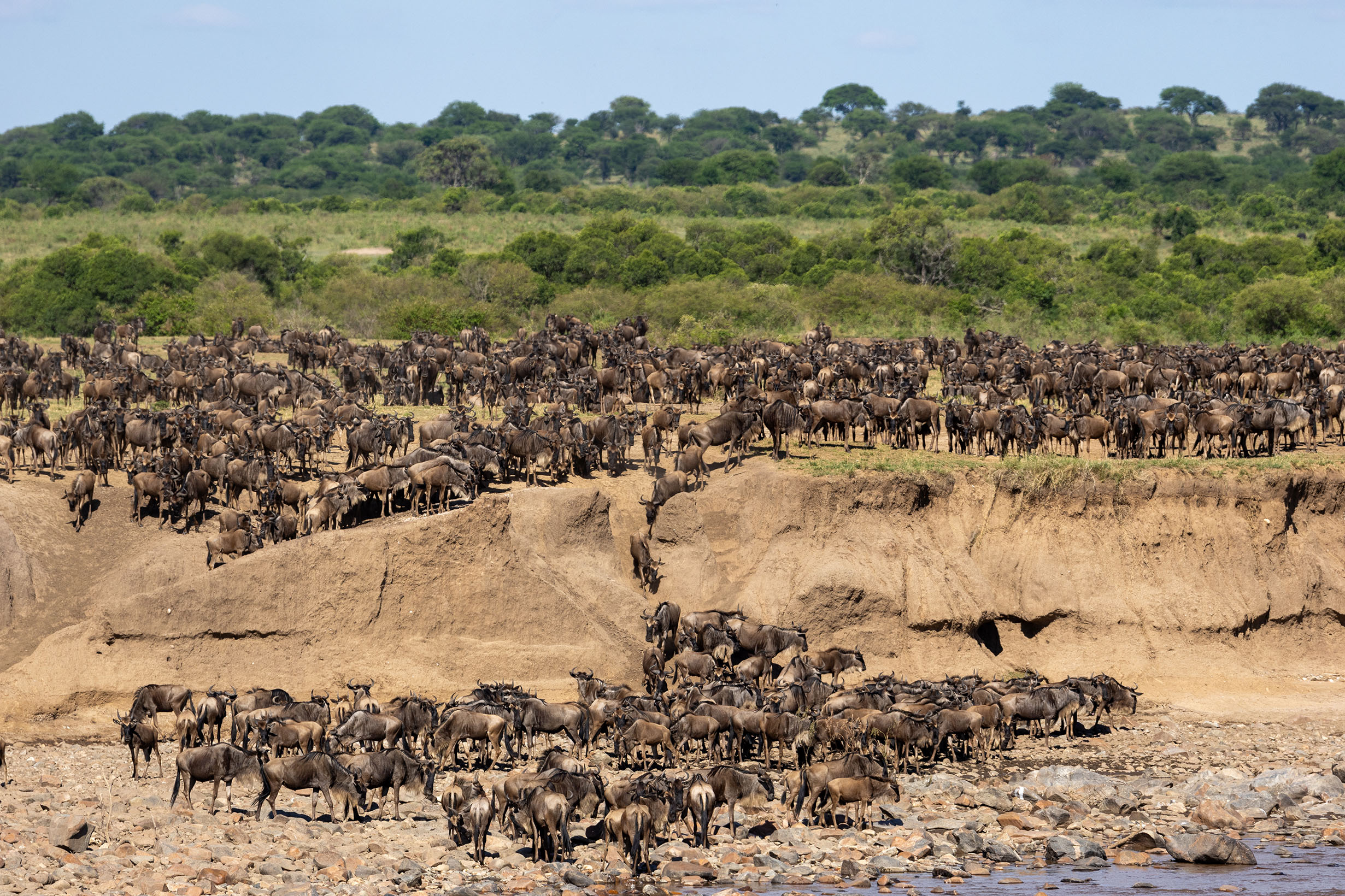
The Great Migration is often hailed as one of the world’s most extraordinary wildlife spectacles, drawing travellers from across the globe to the sweeping savannahs of East Africa. Unlike a single destination, the Great Migration is a natural phenomenon that unfolds across two of Africa’s most iconic safari landscapes: Tanzania’s Serengeti National Park and Kenya’s Maasai Mara National Reserve.
Each year, nearly two million wildebeest, along with hundreds of thousands of zebras and gazelles, embark on an epic journey covering about 3,000 kilometres. This clockwise circuit is driven by the search for fresh grazing and water, dictated by the region’s seasonal rains. The migration begins with calving in the southern Serengeti, then moves northward through the Western Corridor, eventually reaching the Maasai Mara in Kenya by July or August. The return journey south begins in October and November, though the exact timing and route can vary each year depending on rainfall and environmental conditions.
A highlight for many visitors is witnessing the dramatic river crossings, especially at the Mara River. Here, herds gather in tense anticipation before plunging into crocodile-infested waters, a scene of chaos, survival, and the raw power of nature. These crossings are best observed between July and September, but wildlife viewing is outstanding throughout the migration’s route, with predators like lions, hyenas, and crocodiles closely following the herds.
Best times and experiences:
- July–September is the prime time for river crossings in the Maasai Mara and northern Serengeti.
- December–April is the calving season in southern Serengeti, with dramatic predator-prey interactions.
- October–November is when herds begin moving south, offering excellent wildlife viewing in both the Mara and Serengeti.
How to experience it:
- Guided game drives and mobile camps that follow the migration’s path.
- Hot air balloon safaris for a breathtaking aerial perspective of the herds.
- Stay in private conservancies for a more intimate and less crowded experience[6].
- Due to the migration’s popularity, book your safari well in advance, especially for peak river crossing months, to secure the best camps and guides.
A transformative experience
Whether you’re tracking tigers in India, snorkelling with sea lions in the Galápagos, or witnessing the Great Migration in Tanzania, these wildlife destinations offer unparalleled opportunities to connect with nature. But with these extraordinary experiences comes a responsibility to protect the environments and creatures that make them special. As you explore, remember to “take only photos, leave only footprints”, respect wildlife by keeping a safe distance, never feeding or disturbing animals, and always staying on designated trails. Avoid activities that exploit or stress wildlife, and choose tour operators committed to conservation and ethical practices. By following park guidelines, minimising your impact, and supporting local communities, you help ensure these remarkable places remain vibrant and wild for generations to come. Conservation starts with every traveller. Let your adventure be a force for good as well as a source of lifelong stories



